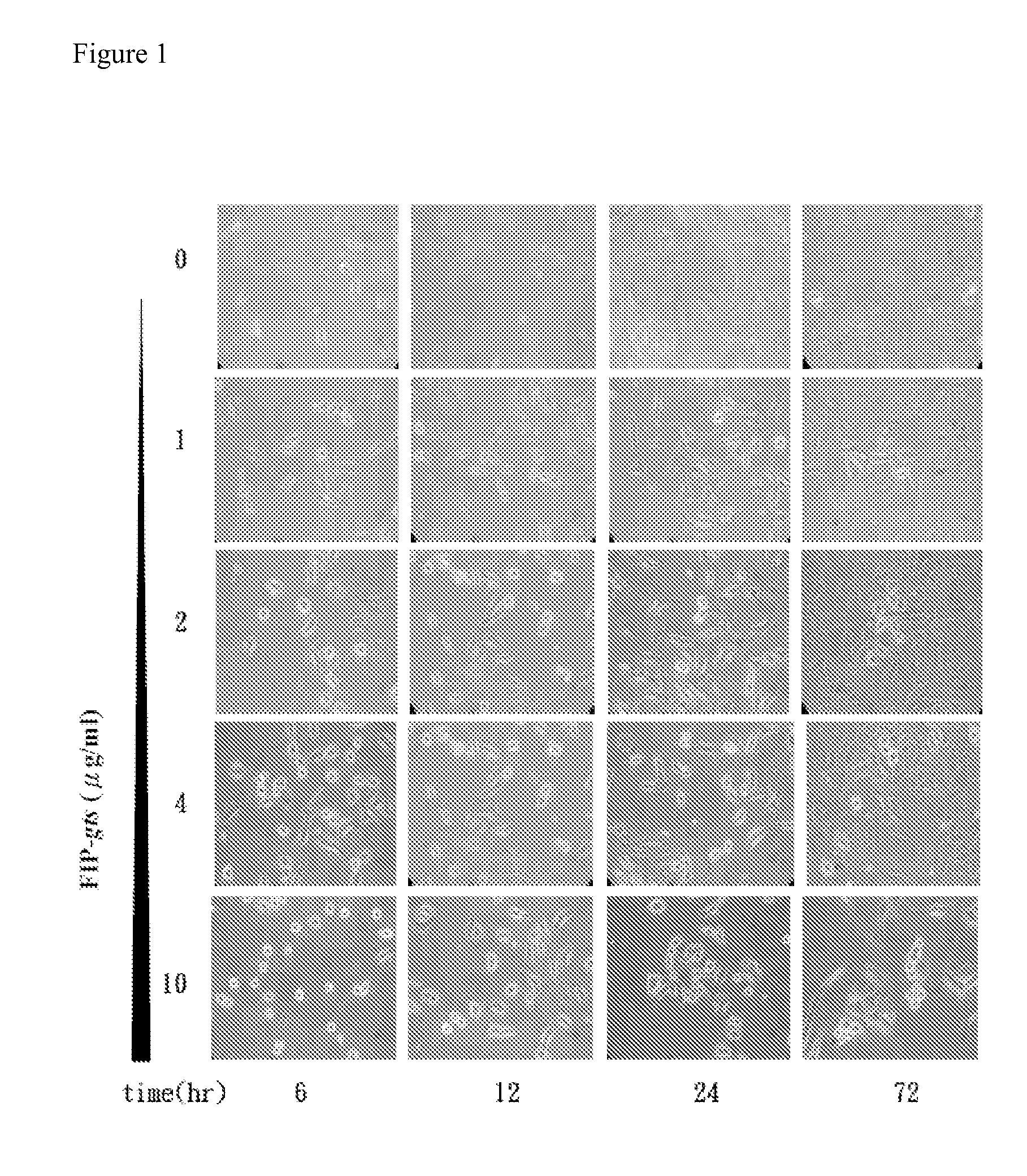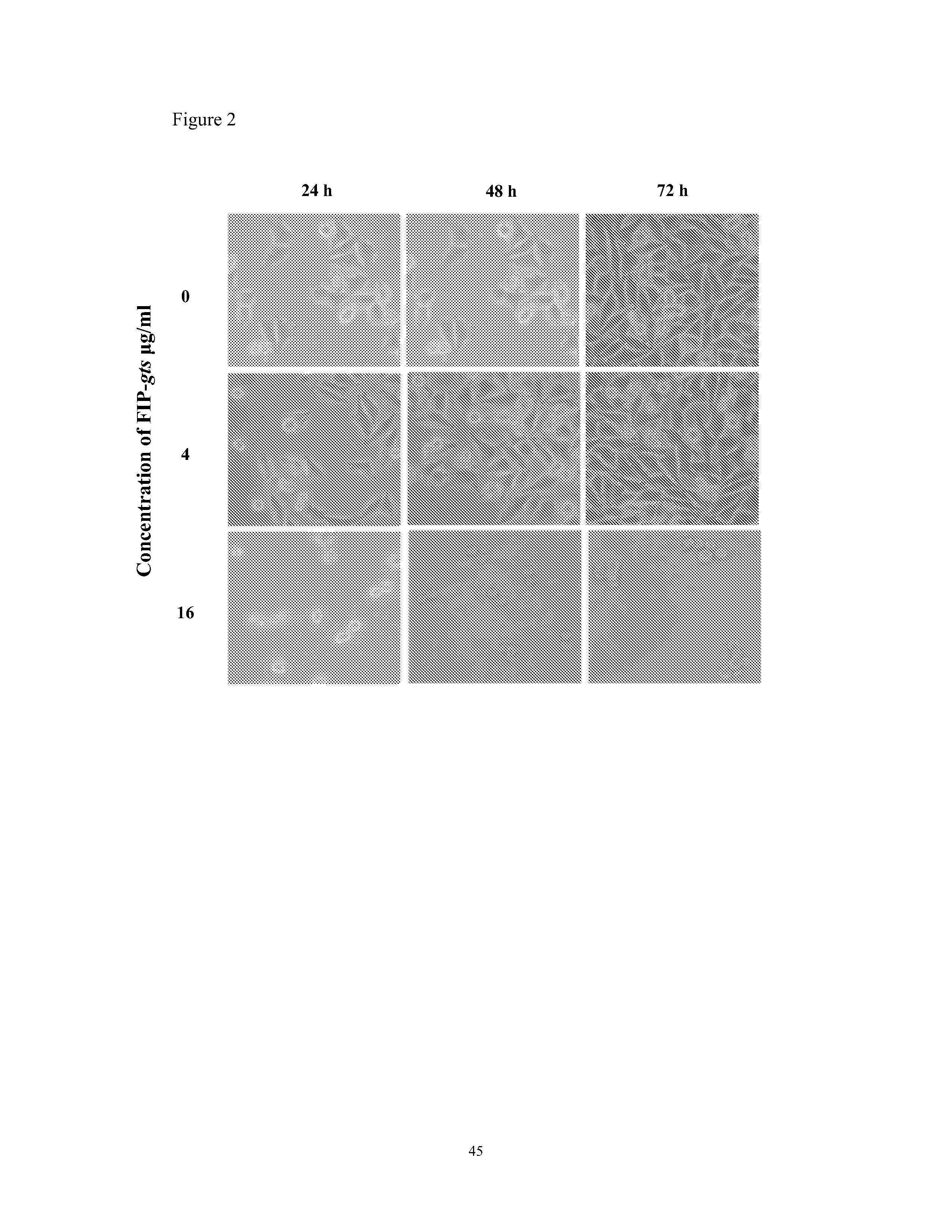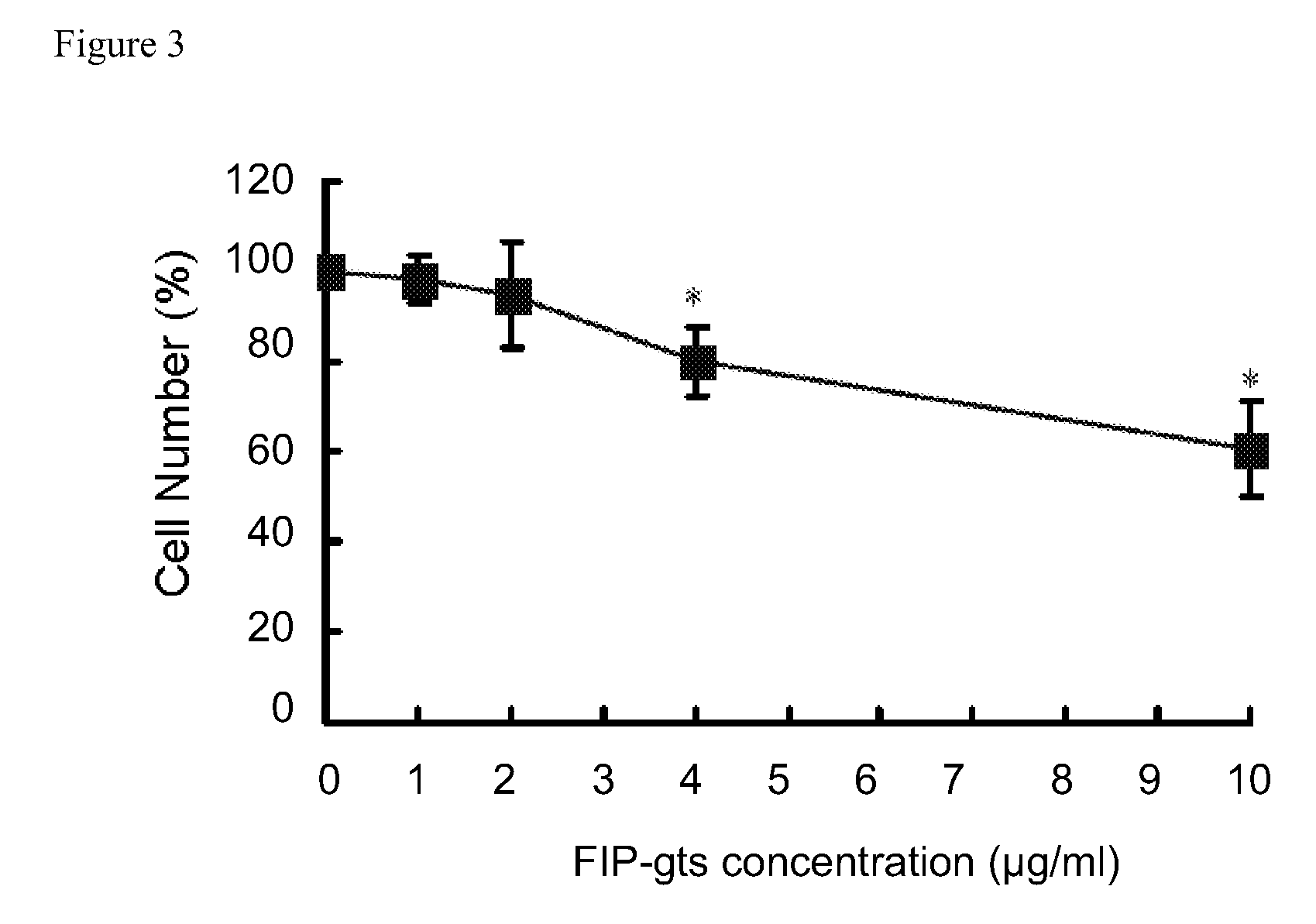Compositions comprising fungal immunomodulatory protein and use thereof
a technology of immunomodulatory proteins and compositions, applied in the field of compositions and compositions of fungal immunomodulatory proteins, can solve the problems of cell bursts, fluid seep in and leak out, and their anticancer function has only rarely been explored
- Summary
- Abstract
- Description
- Claims
- Application Information
AI Technical Summary
Problems solved by technology
Method used
Image
Examples
example 1
Changes of Cell Morphology
[0082]Human pulmonary epithelial cancer cell A549 was a highly vicious pulmonary cancer cell line with high migratory capability. A549 cells as the model system was applied to examine the effect of treating or preventing cancer cells with FIP-gts.
[0083]First, the change of cell morphology after cells were treated with FIP-gts under the microscope. A549 Cells were treated with 0, 1, 2, 4 and 10 μg / ml FIP-gts, respectively, and photographed at different time interval (FIG. 1).
[0084]It was found that after cells were treated with 2, 4 and 10 μg / ml FIP-gts, the morphology of cells clearly changed at 6 hours. Cells transformed from adhering with little tentacles to round and loosely-attached cells. Some cells showed signs of moving when the culture dish was shaked. After treated with FIP-gts for 72 hours, A549 cells not treated or treated with low concentrations of FIP-gts expanded and covered the whole culture dish, whereas cells treated with high concentration...
example 2
[0086]Trypan blue was used to examine cell viability. The same concentration of FIP-gts in Example 1 was used to treat A549 cells. After treating cells with FIP-gts for 48 hours, trypan blue was added. Live cells could repel the trypan blue; therefore, the number of viable cells was measured by the number of cells not labeled by trypan blue.
[0087]2×105 human lung epidermoid carcinoma cell line H1355 and A549 cells were inoculated to 6 cm culture dishes. H1355 cell line was a common cellular model for studying metastasis. Cells were grown at 37° C. for 16 hours. Medium was removed and FIP-gts at the concentrations of 0, 2, 4 and 10 μg / ml were treated.
[0088]Cells were collected at 48 hours after FIP-gts treatment. Cells were collected by removing the old culture medium into 15 ml centrifuge tube. Cells were washed with 1×PBS twice. Cells were resuspended in 0.5 ml TE buffer after centrifugation at room temperature for 1 min. The solution was neutralized by adding t...
example 3
Aqueous Non-Radioactive Cell Proliferation Assay (MTS)
[0090]5000 cells / dish H1355 and A549 cells were inoculated into 96-wells culture plate. Cells were grown at 37° C. for 16 hours. The culture medium was removed and FIP-gts 0, 2, 4 and 10 μg / ml were added, respectively, and cultured for 48 hours. MTS (2 mg / ml in DPBS (0.2 g KCl, 8 g NaCl, 0.2 g KH2PO4, 1.15 g Na2HPO4, 100 mg MgCl2.H2O, 133 mg CaCl2. add dd H2O to 1 L)) and PMS were mixed together 20:1 and 20 μl of the mixture was added into every well. 10% SDS was added to the solution after cells were grown at 37° C. for 1 hr to stop the reaction. The absorption peak at 490 nm was measured using ELISA reader.
[0091]H1355 and A549 cells were each treated with 0, 1, 2, 4 and 10 μg / ml FIP-gts for 48 hours, respectively. Cell survival was measured by the MTS assay. MTS assay examined the cell viability by measuring the dehydrogenase activity.
[0092]It has been found that A549 and H1355 exhibited the same sensitivity to FIP-gts after tr...
PUM
| Property | Measurement | Unit |
|---|---|---|
| concentrations | aaaaa | aaaaa |
| concentrations | aaaaa | aaaaa |
| concentrations | aaaaa | aaaaa |
Abstract
Description
Claims
Application Information
 Login to View More
Login to View More - R&D
- Intellectual Property
- Life Sciences
- Materials
- Tech Scout
- Unparalleled Data Quality
- Higher Quality Content
- 60% Fewer Hallucinations
Browse by: Latest US Patents, China's latest patents, Technical Efficacy Thesaurus, Application Domain, Technology Topic, Popular Technical Reports.
© 2025 PatSnap. All rights reserved.Legal|Privacy policy|Modern Slavery Act Transparency Statement|Sitemap|About US| Contact US: help@patsnap.com



